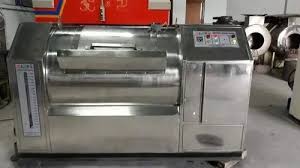The Role of Medical Alert Systems in Enhancing Value-Based Care Models: A Key to Proactive, Patient-Centered Care
In the evolving healthcare landscape, value-based care models are gaining significant traction across the United States. These models emphasize accountability, real-time data, early intervention, and patient empowerment. As a result, medical alert systems, once considered emergency-only devices for the elderly, are now being re-evaluated as strategic assets in the shift toward proactive, patient-centered care.
The transition from fee-for-service to value-based care models is fundamentally about accountability. Hospitals and health systems are rewarded for keeping patients healthy, not just treating them when they're sick. This shift demands real-time data, early intervention, and patient empowerment. Medical alert systems, with their capabilities of GPS tracking, fall detection, biometric monitoring, and seamless integration with electronic health records (EHR), can serve as continuous health monitors, providing critical health insights between clinical visits for chronic care patients, especially seniors living independently.
Bridging the Gap Between Clinical and Home-Based Care
One of the biggest challenges in value-based care is maintaining continuity beyond the hospital or doctor’s office. Patients with chronic conditions often experience health deterioration between scheduled appointments. Medical alert systems provide a solution by enabling round-the-clock monitoring that empowers early interventions. According to a report by MarketsandMarkets, the global personal emergency response systems (PERS) market is expected to grow from $6.3 billion in 2022 to $9.4 billion by 2027, signaling the growing role of these systems not only in personal safety but in structured healthcare delivery frameworks.

ROI for Providers and Payers
Beyond patient health, medical alert systems can also generate measurable returns for providers and insurers participating in value-based care arrangements. Avoidable hospitalizations are costly not only financially but in terms of performance-based metrics. In a Kaiser Permanente study, implementation of remote patient monitoring tools led to a 50% reduction in hospital readmissions for heart failure patients. While not all remote tools are the same, medical alert systems can contribute to similar outcomes when used strategically within care plans. These systems offer detailed incident reports and usage analytics that inform population health strategies, helping care coordinators adjust treatments or follow-up schedules.

Supporting the Aging Population
As the population ages, the demand for healthcare services will surge. A recent report by the Administration for Community Living projects that adults over 65 will make up 21.6% of the population by 2040. Medical alert systems are uniquely suited to serve this group, enabling aging individuals to remain in their homes longer without compromising their safety. By preventing injuries from becoming emergencies, these systems reduce reliance on acute care services and support population-level health improvements.

Integrating Medical Alert Systems into Health IT Ecosystems
For healthcare leaders, the question is no longer whether medical alert systems are useful but how to integrate them effectively into existing health IT ecosystems. Strategic partnerships with alert system providers are emerging as a key trend, allowing health systems to access data in real-time and deliver more personalized care. Entrepreneurial startups are also entering the scene, offering white-labeled or co-branded alert solutions that can be customized to the needs of large healthcare providers. From wearable tech companies to AI-based monitoring platforms, innovation is reshaping how medical alert systems are perceived and deployed.

The timely implementation of medical alert systems emerges as a strategic pivot in fostering proactive and patient-centered care models, providing the cornerstone for enhancing value within healthcares services.
The article effectively highlights the pivotal role of medical alert systems in propelling value-based care models towards more proactive and patientcentric practice, emphasizing their potential to transform healthcare delivery into a truly empowering experience for patients.
Medical alert systems represent an essential tool in the increasingly important realm of value-based care models, enabling a proactive and patient orientation that is central to truly enhancing healthcare outcomes.
The informative article effectively illustrates how medical alert systems function as a crucial component in promoting proactive and patient-centered care models, demonstrating their vital role within modern value enhancement strategies for healthcare.














